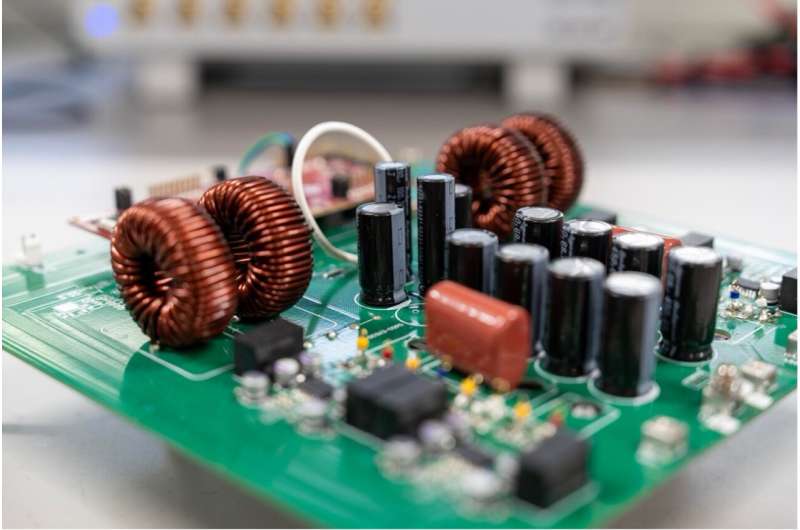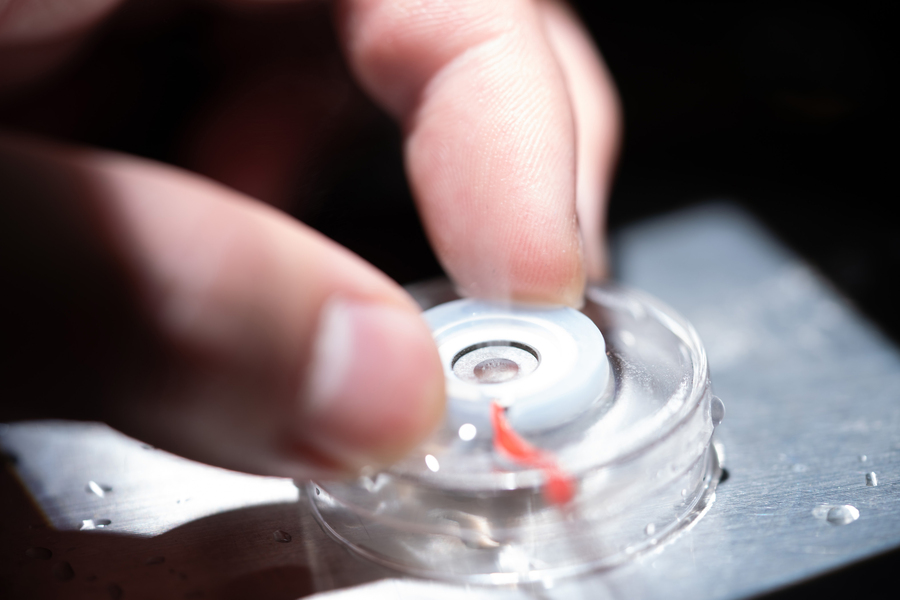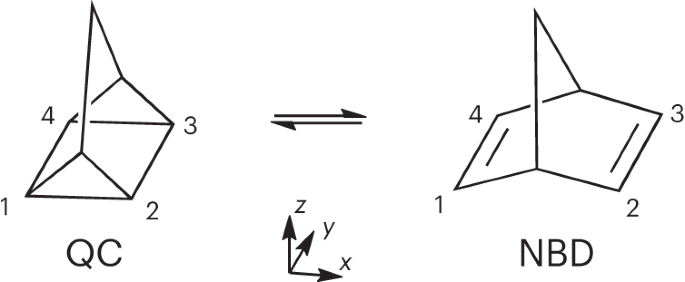Science & Technology News Bulletin
Every week, we editorially select the best S&T stories released from major news outlets. These stories are then ranked and posted (with appropriate credit and references to the originals) on our Blog by Friday afternoon. Hema Viswanath curates this content and has been doing so for ASDR&E's Office of Net Technical Assessments and Office of Technical Intelligence for over seven years before performing the same work for us. Currently, we are experimenting with distributing this content through a free, advertising-supported model. We intend to continue experimenting using paywalls, direct e-mail subscriptions and donations. Hosting this content is important to us and we would like to retain it on at least a revenue-neutral basis. We are also experimenting with enriching the content to make it more relevant to our Government clients.
01. New metasurface innovation unlocks precision control in wireless signals
02. Scientists find novel one-dimensional superconductor
03. Smart fabrics that cancel noise and sculpt sound
04. Compact quantum light processing: New findings lead to advances in optical quantum computing
05. A hydrocarbon molecule as supplier and energy storage solution for solar energy
06. New understanding of energy losses in emerging light source
07. A flexible and efficient DC power converter for sustainable-energy microgrids
08. How light can vaporize water without the need for heat
09. Researchers uncover kinky metal alloy that won’t crack at extreme temperatures at the atomic level
10. Scientists develop novel liquid metal alloy system to synthesize diamond under moderate conditions
And others
Light stands still in a deformed crystal
Mess is best: Disordered structure of battery-like devices improves performance
A new chapter in quantum vortices: Customizing electron vortex beams
Spintronics: A new path to room temperature swirling spin textures
Spintronics research shows material’s magnetic properties can predict how a spin current changes with temperature
01. A universal path for converting light into current in solids
02. Discovery of organic catalyst could lead to cheaper fuel cells
03. Internet can achieve quantum speed with light saved as sound
04. A magnetic nanographene butterfly poised to advance quantum technologies
05. ‘Surprising’ hidden activity of semiconductor material spotted by researchers
06. Combating disruptive ‘noise’ in quantum communication
07. Researchers control quantum properties of 2D materials with tailored light
08. Quantum precision: A new kind of resistor
09. Defect removal of 2D semiconductor crystals
10. The experimental demonstration of a verifiable blind quantum computing protocol
And others
Cloud engineering could be more effective ‘painkiller’ for global warming than previously thought
Hidden threat: Global underground infrastructure vulnerable to sea-level rise
Northern permafrost region emits more greenhouse gases than it captures, study finds
Study reveals giant store of global soil carbon
What is happening to US higher education?
01. New technique lets scientists create resistance-free electron channels
02. Could new technique for ‘curving’ light be the secret to improved wireless communication?
03. Propagating dimensions of light: Deforming versatile non-diffractive beams along the optical trajectory
04. Detecting objects without any physical interaction – reality or science fiction?
05. Magnetic levitation: New material offers potential for unlocking gravity-free technology
06. Waterproof ‘e-glove’ could help scuba divers communicate
07. The spontaneous emergence of 1D superconducting stripes at a 2D interface in an oxide heterostructure
08. Magnetic fields boost clean energy
09. New device gathers, stores electricity in remote settings
10. Old crystal, new story for enhancing deep ultraviolet laser performance
And others
This 3D printer can figure out how to print with an unknown material
Long-term satellite observations show climatological characteristics of isolated deep convection over the Tibetan Plateau
Physicists discover a novel quantum state in an elemental solid
Quantum crystal of frozen electrons – the Wigner crystal – is visualized for the first time
Unlocking exotic physics: Exploring graphene’s topological bands in super-moiré structures
01. 100 kilometers of quantum-encrypted transfer
02. Intelligent liquid
03. Magnetic avalanche triggered by quantum effects: ‘Barkhausen noise’ detected for first time
04. New hydrogel can stretch to 15 times its original size
05. Researchers discover dual topological phases in an intrinsic monolayer crystal
06. Room-temperature 2D magnet: Electronic-structure insights
07. ‘Shear sound waves’ provide the magic for linking ultrasound and magnetic waves
08. A solar cell you can bend and soak in water
09. Universal brain-computer interface lets people play games with just their thoughts
10. A simple way to harvest more ‘blue energy’ from waves
And others
Atmospheric observations in China show rise in emissions of a potent greenhouse gas
Research team realizes magnonic frequency comb
Researchers determine structure of new metal tellurate material with potential uses in solar energy and more
Simple equations clarify cloud climate conundrum
A single photon emitter deterministically coupled to a topological corner state
RECENT POSTS
Top 10 Science and Technology Inventions for the Week of April 26, 2024
01. New metasurface innovation unlocks precision control in wireless signals
02. Scientists find novel one-dimensional superconductor
03. Smart fabrics that cancel noise and sculpt sound
04. Compact quantum light processing: New findings lead to advances in optical quantum computing
05. A hydrocarbon molecule as supplier and energy storage solution for solar energy
06. New understanding of energy losses in emerging light source
07. A flexible and efficient DC power converter for sustainable-energy microgrids
08. How light can vaporize water without the need for heat
09. Researchers uncover kinky metal alloy that won’t crack at extreme temperatures at the atomic level
10. Scientists develop novel liquid metal alloy system to synthesize diamond under moderate conditions
And others
Light stands still in a deformed crystal
Mess is best: Disordered structure of battery-like devices improves performance
A new chapter in quantum vortices: Customizing electron vortex beams
Spintronics: A new path to room temperature swirling spin textures
Spintronics research shows material’s magnetic properties can predict how a spin current changes with temperature

Compact quantum light processing: New findings lead to advances in optical quantum computing
Phys.org April 19, 2024
The polarization of single photons are used as addressable degrees of freedom for turning the interference of nonclassical states of light into practical applications. However, the scale-up for the processing of a large number of photons of these architectures is very resource-demanding due to the rapidly increasing number of components, such as optical elements, photon sources, and detectors. An international team of researchers (Austria, Italy, Belgium) demonstrated a resource-efficient architecture for multiphoton processing based on time-bin encoding in a single spatial mode. They used an efficient quantum dot single-photon source and a fast programmable time-bin interferometer to observe the interference of up to eight photons in 16 modes, all recorded only with one detector which considerably reduced the physical overhead previously needed for achieving equivalent tasks. According to the researchers their results can form the basis for a future universal photonics quantum processor operating in a single spatial mode… read more. Open Access TECHNICAL ARTICLE

A flexible and efficient DC power converter for sustainable-energy microgrids
Science Daily April 19, 2024
An internal team of researchers (Japan, Taiwan) proposed a floating four-phase interleaved chargepump bidirectional dc-dc converter (F4P-ICPBDC) with wide Buck/Boost voltage ratio. The interleaved structure was used to mitigate the current ripple across the low-voltage side capacitor and inductors, while the floating configuration facilitated the high Buck/Boost voltage conversion ratio. To ensure a balanced average inductor current throughout the entire range of duty cycle, an asymmetric duty limit control strategy was implemented. Bidirectional synchronous rectification operations were seamlessly carried out without the need for additional hardware, which enhanced the overall converter efficiency. They developed a prototype to validate the wide Buck/Boost voltage ratio of the proposed converter between the constant low-voltage side (72 V) and the adjustable high-voltage side (400-800 V). The maximum efficiencies of the converter were recorded as 98.3% in the Buck mode and 97.6% in the Boost mode, respectively. Experimental results validated the feasibility and the efficacy of the proposed converter… read more. TECHNICAL ARTICLE

How light can vaporize water without the need for heat
MIT News April 23, 2024
Although water is almost transparent to visible light, researchers at MIT demonstrated that the air–water interface interacts strongly with visible light via what they hypothesized as the photomolecular effect. In this effect, transverse-magnetic polarized photons cleave off water clusters from the air–water interface. They used 14 different experiments to demonstrate the existence of this effect and its dependence on the wavelength, incident angle, and polarization of visible light. They also demonstrated that visible light heats up thin fogs, suggesting that this process could impact weather, climate, and the earth’s water cycle and that it provided a mechanism to resolve the long-standing puzzle of larger measured clouds absorption to solar radiation than theory could predict based on bulk water optical constants. According to the researchers their study suggests that the photomolecular effect should happen widely in nature, from clouds to fogs, ocean to soil surfaces, and plant transpiration and can also lead to applications in energy and clean water… read more. TECHNICAL ARTICLE

A hydrocarbon molecule as supplier and energy storage solution for solar energy
Phys.org April 19, 2024
The light-induced ultrafast switching between molecular isomers norbornadiene and quadricyclane can reversibly store and release a substantial amount of chemical energy. Prior work observed signatures of ultrafast molecular dynamics in both isomers upon ultraviolet excitation but could not follow the electronic relaxation all the way back to the ground state experimentally. An international team of researchers (USA – Kansas State University, University of Nebraska–Lincoln, SLAC National Accelerator Laboratory, Brown University, UK, Germany, Italy, Sweden, Australia) identified two competing pathways by which electronically excited quadricyclane molecules relaxed to the electronic ground state. The fast pathway (<100 femtoseconds) was distinguished by effective coupling to valence electronic states, while the slow pathway involved initial motions across Rydberg states and took several hundred femtoseconds. Both pathways facilitated interconversion between the two isomers. They predicted that the branching ratio of norbornadiene/quadricyclane products immediately after returning to the electronic ground state to be approximately 3:2… read more. Open Access TECHNICAL ARTICLE

Light stands still in a deformed crystal
Phys.org April 24, 2024
Although in electronic crystals, magnetic fields can be used to induce a multitude of unique phenomena, the uncharged nature of photons necessitates alternative approaches to bring about similar control over photons at the nanoscale. Researchers in the Netherlands demonstrated experimentally pseudomagnetic fields in two-dimensional photonic crystals through engineered strain of the lattice. Taking advantage of the photonic crystal’s design freedom, they realized domains of opposite pseudomagnetic field and observed chiral edge states at their interface. They revealed that the strain-induced states could achieve remarkably high quality factors despite being phase matched to the radiation continuum. Together with the high density of states and high degeneracy associated with flat bands, this provided powerful prospects for enhancing light–matter interactions, and illustrated the broad potential of psdeudomagnetic fields in the nanophotonic domain. According to the researchers they established a new design principle to govern both on-chip and radiating light fields… read more. TECHNICAL ARTICLE

Mess is best: Disordered structure of battery-like devices improves performance
Science Daily April 18, 2024
The difficulty in characterizing the complex structures of nanoporous carbon electrodes has led to a lack of clear design principles with which to improve supercapacitors. Charge is stored within the porous carbon structure, and pore size has thus long been viewed as the key factor for determining storage capacity. An international team of researchers (UK, France) evaluated commercial nanoporous carbons and did not find a correlation between pore size and capacitance. Rather, their combination of simulations and data measurements indicated that the key factor was the extent of disorder, as smaller graphene-like domains could more efficiently store ions within the nanopores. More disordered carbons with smaller graphene-like domains showed higher capacitances owing to the more efficient storage of ions in their nanopores. According to the researchers their findings suggest ways to understand and exploit disorder to achieve highly energy-dense supercapacitors… read more. TECHNICAL ARTICLE

A new chapter in quantum vortices: Customizing electron vortex beams
Nanowerk April 23, 2024
Almost all the experimentally created electron vortex beam (EVBs) manifest isotropic doughnut intensity patterns. Based on the correlation between local divergence angle of electron beam and phase gradient along azimuthal direction, researchers in China showed that free electrons could be tailored to EVBs with customizable intensity patterns independent of the carried OAM. As proof-of-concept, by using computer generated hologram and designing phase masks to shape the incident free electrons they tailored three structured EVBs carrying identical OAM to exhibit completely different intensity patterns. Through the modal decomposition, they quantitatively investigated their OAM spectral distributions and revealed that structured EVBs present a superposition of a series of different eigenstates induced by the locally varied geometries. According to the researchers their results generalized the concept of EVB, and demonstrated a highly controllable degree of freedom for electron beam manipulation in addition to OAM… read more. Open Access TECHNICAL ARTICLE

New metasurface innovation unlocks precision control in wireless signals
Nanowerk April 22, 2023
Polarization conversion and beam scanning metasurfaces are commonly used to reduce polarization mismatch and direct electromagnetic waves in a specific direction to improve the strength of a wireless signal. However, identifying suitable active and mechanically reconfigurable metasurfaces for polarization conversion and beam scanning is a considerable challenge, and the reported metasurfaces have narrow scanning ranges, are expensive, and cannot be independently controlled. Researchers in South Korea proposed a reconfigurable transmissive metasurface combined with a scissor and rotation actuator for independently controlling beam scanning and polarization conversion functions. They constructed metasurface with rotatable unit cells (UCs) that could switch the polarization state between right-handed and left-handed circular polarization by flipping the UCs to reverse their phase variation. Using the scissor actuator to linearly change the distance between the UCs they demonstrated independent beam scanning. According to the researchers their numerical and experimental results confirmed that the metasurface they proposed can perform beam scanning in the range of 28° for both the positive and negative regions of a radiation pattern at an operational frequency of 10.5 GHz… read more. Open Access TECHNICAL ARTICLE

New understanding of energy losses in emerging light source
Nanowerk April 18, 2024
Emerging light-emitting electrochemical cells (LECs) can be cost- and energy-efficiently fabricated by ambient-air printing by virtue of the in situ formation of a p-n junction doping structure. However, the in situ doping transformation renders a meaningful efficiency analysis challenging. Researchers in Sweden have developed a method for separation and quantification of major LEC loss factors, notably the outcoupling efficiency and exciton quenching. They found the shift in the position of the emissive p-n junction in common singlet-exciton emitting LECs to shift markedly with increasing current, and the influence of this shift on the outcoupling efficiency was quantified. They verified that the LEC-characteristic high electrochemical-doping concentration rendered singlet-polaron quenching (SPQ) was already at low drive current density, but also that SPQ increased super-linearly with increasing current, because of increasing polaron density in the p-n junction region. This resulted in SPQ dominating singlet-singlet quenching for relevant current densities, and significantly contributed to the efficiency roll-off. According to the researchers their method for deciphering the LEC efficiency roll-off can contribute to a rational realization of all-printed LEC devices that are efficient at high luminance… read more. Open Access TECHNICAL ARTICLE